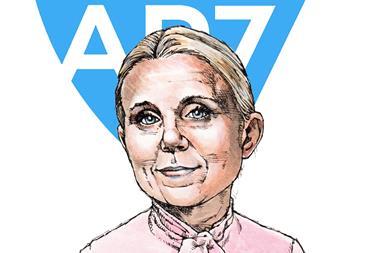EUROPE - EDB Ergo Group, one of the leading IT companies in Norway, has settled a pensions dispute with Norwegian trade unions.
The settlement relates to a dispute that began in 2009 when EDB Business Partner, now merged with EDB Ergo, decided to close its defined benefit pension (DB) fund in Norway from 1 September 2009.
All members of the DB scheme were transferred to the EDB defined contribution scheme, and the closure of the DB fund resulted in costs savings of NOK70m (€9m).
A group of employees took the company to court, challenging its right to make changes to the DB pensions arrangements unilaterally.
The terms of the settlement states that the compensation scheme established in 2009 as a result of the DB scheme closure will continue unchanged.
However, contrary to the current agreement, the company will no longer be entitled to change the terms of this arrangement unilaterally.
In addition, the company has agreed to pay new cash compensation, with effect from 1 January, to affected workers employed by the company as of 25 August for as long as they remain in the company's employment.
The annual effect on EBITA and cash flow for EDB Ergo Group will be in the order of NOK9m, and the discounted present value is estimated to be NOK67m.
Elsewhere in the region, Kyrkans Pensionskassa, the Swedish Church Pension Fund, returned 1.7% in the first half of 2011, down from 3.2% for the same period last year.
The fund's solvency ratio was a healthy 156%, while total assets amounted to SEK9.8bn (€1bn).
To boost returns, the fund has decided to add a new asset class to its portfolio. The church fund will invest SEK575m in alternative investments and has so far allocated SEK107m to these assets.
For the same period, PP Pension, the pension fund for press and media, returned 0.6%.
In particular, real estate and fixed income boosted returns, whereas equities and hedge funds detracted from performance. PP Pension has SEK9.6bn in assets.
The AP funds also showed positive returns for the first six months of the year. All four buffer funds boosted assets between 2.3% and 1.6%.
The top performer was AP2 with 2.3%, up from 1.3% for the same period last year. Assets totalled SEK227.5bn.
During the first half, the fund changed its allocation and moved assets from Swedish equities and fixed income to emerging markets.
The fund also created a joint real estate company with AP1 to invest in the European real estate markets.
In addition, it has created a joint company with TIAA-CREF in the US to invest in agricultural real estate in the US, Australia and Brazil.
Alternative investments, which total 11% of assets and include real estate, returned 7.6% for the first six months.
Meanwhile, AP4 and AP3 both returned 1.6%.
AP4's assets rose by SEK3.4bn to SEK216bn. Top performers were alternative investments and real estate, which returned 11.7% and 13.3%, respectively.
Global equities returned 2.8%, whereas Swedish equities lost 0.4%.
AP3 boosted total assets by almost SEK3.3bn to SEK225bn.
Equities were the best performing assets class, returning 2.5%.
Unlisted equities returned 7.8%, and North America and Europe were the top contributors.
Fixed income returned 0.4%, with falling interest rates in the US, the UK and Sweden adding to performance.
Government bonds in the euro-zone detracted from performance, mainly because of the devaluation of Greek government bonds.
The fund had 3.3% of assets invested in the PIIGS region.
AP1 publishes its first-half results on 1 September.












No comments yet